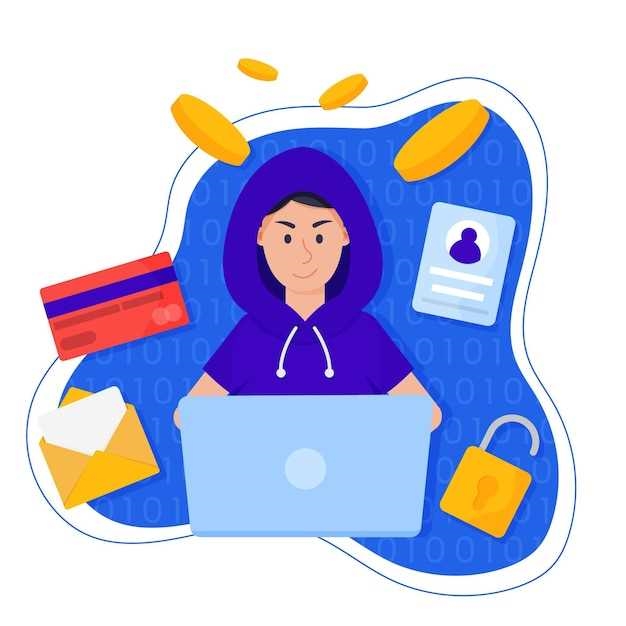
Advancements in the world of protecting online data and digital assets are becoming increasingly vital for modern businesses. As technology continues to evolve, so do the methods and tactics employed by cyber criminals to breach security protocols. Staying ahead of the curve is essential in safeguarding your company’s sensitive information and maintaining trust with your customers.
From the rise of ransomware attacks to the growing importance of multi-factor authentication, there are several key trends that every organization should be aware of in the realm of digital security. This article will explore the latest developments in the cybersecurity landscape and provide actionable insights on how to fortify your defenses against potential threats.
Current Threat Landscape in Cybersecurity
In the rapidly evolving world of digital security, it is crucial for organizations to stay informed about the latest risks and vulnerabilities that could potentially compromise their information assets. Understanding the current threat landscape in the realm of data protection is paramount for safeguarding sensitive data and ensuring the integrity of systems and networks.
Emerging Threats
As technology continues to advance, so do the tactics and techniques employed by malicious actors seeking to exploit vulnerabilities in computer systems. From ransomware attacks to phishing scams, the ever-changing threat landscape presents a myriad of challenges for businesses looking to protect their digital assets. Organizations must remain vigilant and proactive in their approach to cybersecurity in order to mitigate the risks posed by these emerging threats.
Impact on Organizations
The repercussions of falling victim to a cyber attack can be severe, ranging from financial losses and reputational damage to legal liabilities and regulatory fines. In today’s interconnected world, the consequences of a data breach can reverberate throughout an organization, affecting not only its bottom line but also its long-term viability. By staying abreast of the current threat landscape in cybersecurity, businesses can better prepare themselves to address potential risks and mitigate the impact of a security incident.
| Threat | Description | Preventive Measures |
|---|---|---|
| Ransomware | A type of malware that encrypts files on a victim’s computer and demands a ransom for decryption. | Regularly backup data, educate employees on phishing tactics, and use reputable antivirus software. |
| Phishing | A fraudulent attempt to obtain sensitive information by disguising as a trustworthy entity in electronic communication. | Train employees to recognize phishing emails, implement email filtering solutions, and verify sender identities. |
The evolving tactics of cyber criminals

In the ever-changing landscape of digital threats, malicious actors are constantly adapting and refining their methods to bypass security measures and exploit vulnerabilities. Understanding the evolving tactics of cyber criminals is crucial for businesses to protect their sensitive data and networks.
Phishing and social engineering

One of the most common tactics used by cyber criminals is phishing, where they deceive individuals into providing sensitive information such as passwords or financial details. Social engineering techniques are also frequently employed to manipulate users into disclosing confidential data or compromising security protocols.
Malware and ransomware attacks
Malware, including viruses, worms, and Trojan horses, continue to be prevalent tools for cyber criminals seeking to infiltrate systems and steal data. Ransomware attacks have also become increasingly sophisticated, encrypting crucial files and demanding payment for their release, posing a significant threat to businesses of all sizes.
- Utilizing fake websites and emails to trick victims into divulging personal information
- Exploiting software vulnerabilities to gain unauthorized access to networks
- Deploying advanced persistent threats to maintain long-term access to compromised systems
As cyber criminals become more sophisticated and innovative in their tactics, organizations must stay vigilant and proactive in implementing robust cybersecurity measures to mitigate risks and safeguard their digital assets.
Implementing Multi-Factor Authentication for Enhanced Security
In the realm of safeguarding your organization’s digital assets, it is imperative to go beyond traditional password protection and explore more advanced methods of authentication. One crucial method that has gained popularity in recent years is multi-factor authentication (MFA), which adds an extra layer of security by requiring users to provide multiple forms of verification before gaining access to sensitive data.
- Enhancing protection
- Increasing security measures
- Strengthening authentication processes
By implementing MFA, you can significantly reduce the risk of unauthorized access to your systems and data. This added level of security makes it much harder for malicious actors to breach your defenses, as they would need to provide not only a password but also another form of verification, such as a fingerprint scan, security token, or biometric data.
- Improving security posture
- Minimizing security vulnerabilities
- Protecting sensitive information
Furthermore, MFA can help mitigate the threat of phishing attacks, where cybercriminals use deceptive tactics to trick users into revealing their login credentials. Even if a user falls victim to a phishing scam and unwittingly provides their password, the additional authentication factors required by MFA can prevent unauthorized access.
- Preventing data breaches
- Thwarting cyber threats
- Strengthening defense mechanisms
Overall, implementing multi-factor authentication is a critical step towards enhancing the security posture of your organization and protecting your valuable assets from potential cyber threats. By incorporating additional layers of verification, you can fortify your defenses and reduce the risk of data breaches, ensuring a safer digital environment for your business.
Enhancing Protection Against Credential Theft

In today’s rapidly evolving digital landscape, safeguarding sensitive information against unauthorized access is more crucial than ever. One of the key challenges businesses face is the threat of credential theft, where malicious actors steal login credentials to gain access to confidential data. Enhancing protection against credential theft is essential for maintaining the security and integrity of your organization’s digital assets.
Implementing multi-factor authentication is a proactive measure to bolster your defenses against credential theft. By requiring users to provide multiple forms of verification before granting access, you can significantly reduce the risk of unauthorized entry. Utilizing biometric data, SMS codes, or authenticator apps in addition to passwords adds an extra layer of security to your authentication process.
Regularly updating passwords and enforcing strong password policies are fundamental practices in mitigating the risk of credential theft. Encourage employees to create unique, complex passwords and set a schedule for password changes to prevent unauthorized access. Additionally, consider implementing password managers to securely store and manage login credentials across your organization.
Monitoring and analyzing login activities can help detect suspicious behavior indicative of credential theft. By closely monitoring login attempts, location data, and device information, you can identify potential security threats and take immediate action to prevent unauthorized access. Investing in advanced security analytics tools can provide valuable insights into user behavior and help proactively identify and respond to security incidents.
Training employees on cybersecurity best practices is crucial in enhancing protection against credential theft. Educate staff members on the importance of safeguarding login credentials, recognizing phishing attempts, and reporting suspicious activities. By fostering a culture of cybersecurity awareness within your organization, you can empower employees to play an active role in maintaining the security of sensitive information.
By taking proactive steps to enhance protection against credential theft, you can strengthen your organization’s cybersecurity posture and safeguard valuable data from potential threats. Prioritizing security measures such as multi-factor authentication, password management, login activity monitoring, and employee training can help mitigate the risk of credential theft and protect your business from cyber threats.
Data Privacy Regulations Impacting Business Practices
Data protection laws and regulations have a significant impact on how businesses operate and handle sensitive information. Compliance with these regulations is crucial for businesses to protect their customers’ privacy and build trust.
Businesses must understand and adhere to data privacy regulations to avoid legal consequences and maintain a positive reputation. Violations can result in hefty fines, lawsuits, and damaged relationships with customers. Keeping up-to-date with changing regulations is essential to ensure ongoing compliance and security.
- 1. General Data Protection Regulation (GDPR)
- 2. California Consumer Privacy Act (CCPA)
- 3. Health Insurance Portability and Accountability Act (HIPAA)
- 4. Personal Information Protection and Electronic Documents Act (PIPEDA)
- 5. Payment Card Industry Data Security Standard (PCI DSS)
Understanding the specific requirements of each regulation is crucial for businesses to protect personal data, secure sensitive information, and maintain a competitive edge. Building a robust data protection framework can help businesses navigate the complex landscape of data privacy regulations and safeguard their customers’ information.



